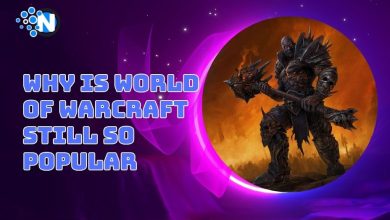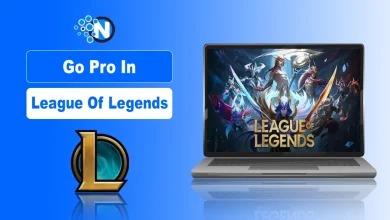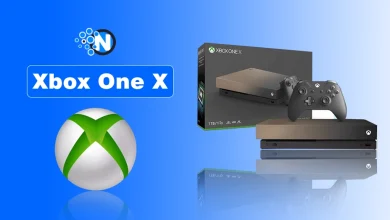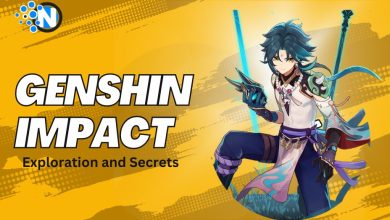What Is Game Art? A Complete Guide to Visuals in Gaming

When you pick up a controller or tap on your phone to play a game, what’s the first thing you notice? The visuals.
The characters you meet, the landscapes you explore, and even the menus you click on are all part of game art. In short, game art is everything you see on screen. It’s the visual side of gaming that makes stories believable, adventures exciting, and gameplay unforgettable.
In this blog post, I will explain what game art is and how it improves player experience and overall appeal of the game.
Game Art Defined
The visual core of any video game is called game art. It establishes the appearance of a world, the ways in which people express themselves, and the degree to which players emotionally relate to what they see on screen. It is a type of design that influences the player experience right away, rather than just an adornment.
From the tiniest button to the biggest landscape, each item has a unique function. Game art is viewed by studios as a system in which logic and creativity coexist, and every element enhances gameplay.

The Meaning Behind Game Art
Game 2D art services combine illustration, animation, and design to create functional visuals. It converts intangible concepts into playable settings. Artists solve challenges as well as create images. Clear communication of mechanics, mood, and advancement is the aim.
Fundamentally, game art encompasses a number of important fields:
- Conceptual design. specifies the game world’s ambiance, forms, and tone. It directs every subsequent stage of production.
- Modeling in two and three dimensions. transforms drawings into intricate materials that are prepared for rendering or animation.
- Brightness and texture. Give sceneries and objects more depth, color harmony, and realism.
- UX and UI design. makes certain that controls and menus are aesthetically consistent and easy to use.
- Effects and animation. Every encounter should have movement, impact, and response.
Although the abilities needed for each direction vary, they all adhere to the same principle: visual clarity is more significant than visual complexity.
Why Game Art Matters
Before they understand games, players engage in visual interaction. They are guided via mechanics, expectations are created, and progress is recognized with the aid of art. Function and emotion are instantly conveyed by a well-designed interface or character without the need for additional explanation.
Trust is also increased by good game art. It demonstrates that developers value cohesiveness and quality. When a game appears well-planned and deliberate, players automatically believe it was created with care and consideration for their time.
The main benefits of strong art direction include:
- Faster player onboarding and understanding of controls.
- Improved engagement and emotional connection.
- Stronger brand identity and memorability.
- Higher retention due to consistent visual language.
Even simple games perform better when their art supports clarity and usability.
The Workflow of Creating Game Art
Professional production always starts with research and planning. Random creativity wastes time; structured creativity saves it.
A typical workflow includes:
- Pre-production research. Studying audience preferences, genre trends, and competitors.
- Concept development. Building mood boards and sketches that set direction.
- Asset creation. Producing 2D or 3D models, textures, and effects.
- Integration. Importing visuals into the game engine to test performance and readability.
- Polish and optimization. Adjusting lighting, animations, and resolution for final builds.
This order allows teams to detect problems early and maintain consistency through the entire cycle.
The Role of Inkration Studio in Game Art
Inkration Studio specializes in full-cycle art production for games. Their approach combines deep technical understanding with a design-first mindset. The studio’s artists work closely with developers and producers to ensure that visuals fit gameplay logic.
Their work covers:
- Creating unified art styles across projects of different genres.
- Designing characters, environments, and interfaces from scratch.
- Building optimized assets ready for integration in Unity or Unreal.
- Supporting long-term projects with scalable pipelines and asset libraries.
Their strength lies in collaboration. Each visual decision is based on real gameplay data, player behavior, and platform limitations. That is why their results feel cohesive, not improvised.
The Connection Between Art and Gameplay
In game development, visuals are not independent of mechanics. The two interact constantly. Artists design to improve gameplay feedback and emotional pacing. When the art team understands how systems work, they can create assets that feel natural instead of forced.
Key examples of this connection:
- Enemy silhouettes designed to be recognized instantly during combat.
- Background colors adjusted to highlight active zones.
- Animation speed synced with player controls for smoother interaction.
- Lighting cues guiding exploration without explicit markers.
The art does not just show the world; it teaches players how to move through it.
Balancing Aesthetics and Performance
Every visual element must run smoothly on the target platform. Artists often face the challenge of maintaining beauty without sacrificing frame rate. The solution is not to reduce quality but to plan carefully.
Optimization practices that professionals use include:
- Reusing textures across assets to save memory.
- Using simplified models where details are less visible.
- Baking lighting instead of rendering it dynamically when possible.
- Regular performance profiling inside the engine.
When art is optimized well, the game feels fast, stable, and visually consistent.
Common Mistakes in Game Art Production
Even experienced teams make mistakes when rushing or skipping planning. These mistakes often cause delays or rework.
Frequent problems include:
- Inconsistent proportions between characters and environments.
- Unclear color hierarchy that confuses players.
- Lack of documentation for style and naming conventions.
- Neglecting optimization until the last phase of development.
Avoiding these issues requires discipline and collaboration between artists and programmers.
Why Collaboration Defines Quality
Game art is not a solo process. It is a conversation between creative vision and technical execution. Communication between departments ensures that visuals serve gameplay goals instead of conflicting with them.
Efficient teams maintain:
- Shared reference boards for quick alignment.
- Regular visual reviews with design and QA teams.
- Version control systems for art assets.
- Open channels for feedback and revisions.
This type of structure keeps production efficient and prevents miscommunication.
Wrapping Up
Game art is the secret ingredient that transforms mechanics into magic. It’s what makes players pause to admire a sunset in an open‑world RPG or fall in love with a quirky character design.
Without strong art direction, a game risks feeling flat or confusing. With it, the game becomes memorable, emotional, and worth revisiting. In simple words, game art is the heart of the gaming experience.




